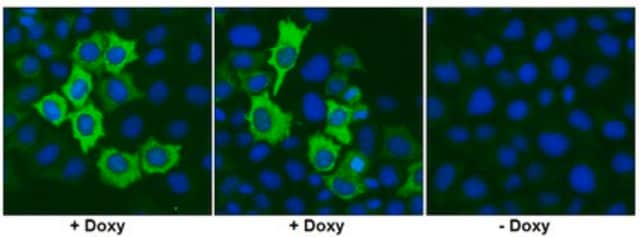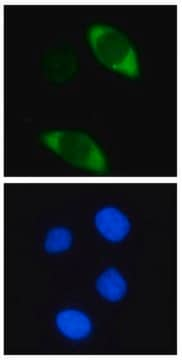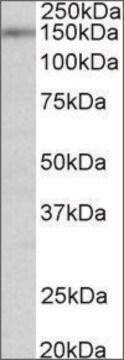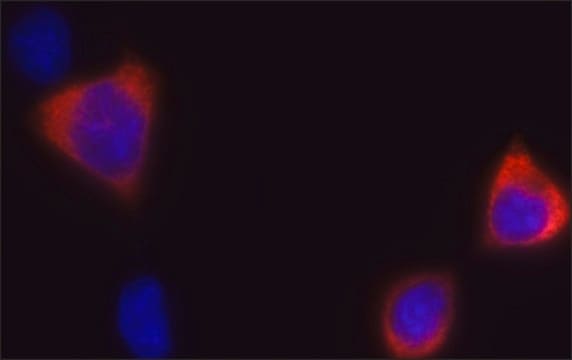MAB131872
Anti-Cas9 Antibody, clone 6F7
clone 6F7, from mouse
Synonyme(s) :
CRISPR-associated endonuclease Cas9, SaCas9
About This Item
Produits recommandés
Source biologique
mouse
Niveau de qualité
Forme d'anticorps
purified immunoglobulin
Type de produit anticorps
primary antibodies
Clone
6F7, monoclonal
Espèces réactives
Staphylococcus aureus, mouse
Technique(s)
immunocytochemistry: suitable
western blot: suitable
Isotype
IgG1κ
Numéro d'accès UniProt
Conditions d'expédition
ambient
Modification post-traductionnelle de la cible
unmodified
Description générale
Spécificité
Immunogène
Application
Western Blotting Analysis: A representative lot detected Cas9 in HEK293 overexpressing fusion protein containing GFP and C-terminus of Cas9 from S. aureus (Courtesy of Dr Gerry Shaw).
Qualité
Western Blotting Analysis: A 1:1,000 dilution of this antibody detected Cas9 in 10 µg of HEK293 cell lysates overexpressing a fusion protein containing GFP and c-terminus of Cas9 from Staphylococcus aureus.
Description de la cible
Forme physique
Autres remarques
Not finding the right product?
Try our Outil de sélection de produits.
Code de la classe de stockage
10 - Combustible liquids
Classe de danger pour l'eau (WGK)
WGK 2
Certificats d'analyse (COA)
Recherchez un Certificats d'analyse (COA) en saisissant le numéro de lot du produit. Les numéros de lot figurent sur l'étiquette du produit après les mots "Lot" ou "Batch".
Déjà en possession de ce produit ?
Retrouvez la documentation relative aux produits que vous avez récemment achetés dans la Bibliothèque de documents.
Notre équipe de scientifiques dispose d'une expérience dans tous les secteurs de la recherche, notamment en sciences de la vie, science des matériaux, synthèse chimique, chromatographie, analyse et dans de nombreux autres domaines..
Contacter notre Service technique








